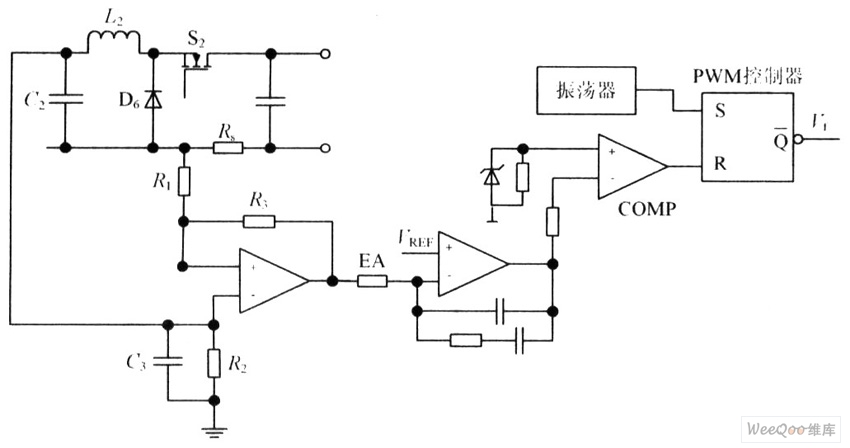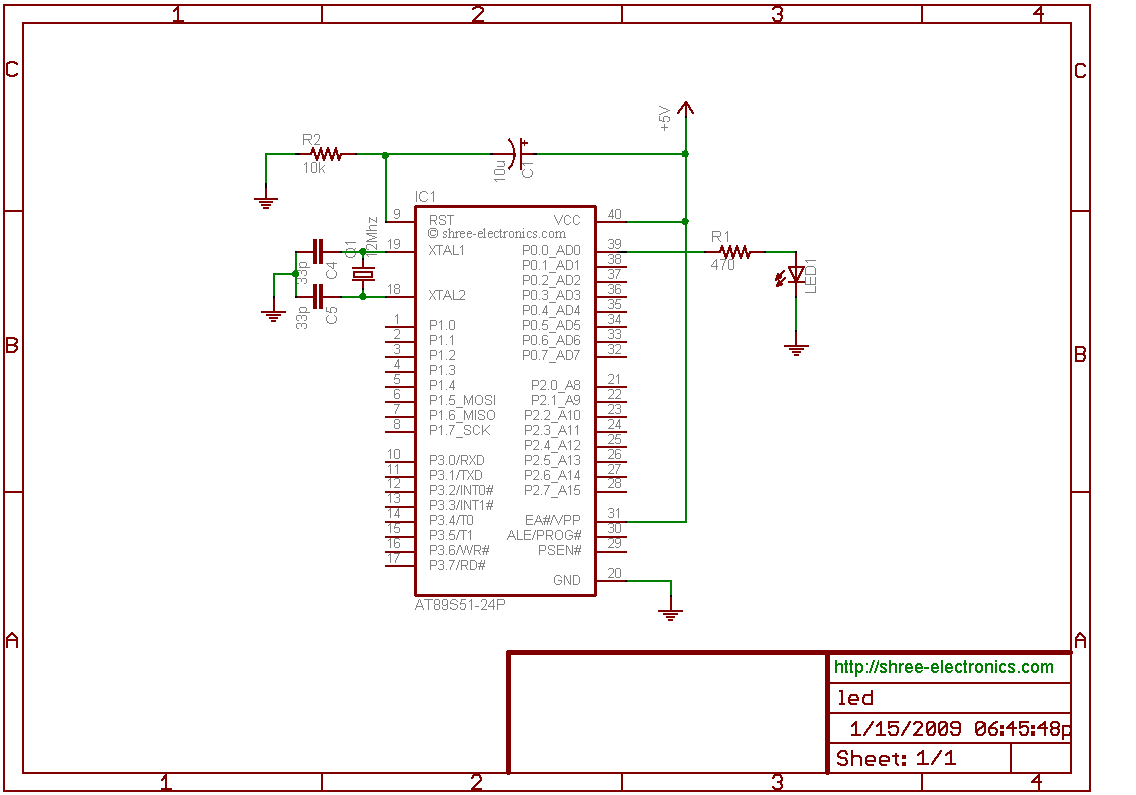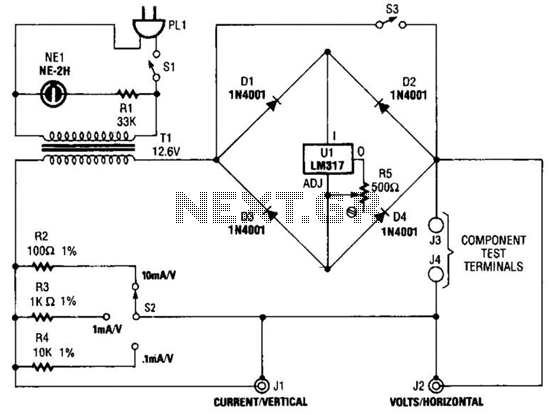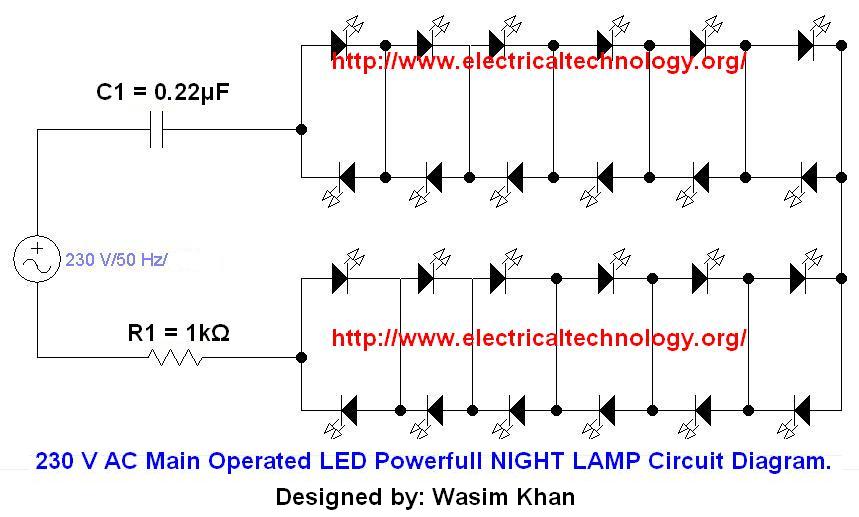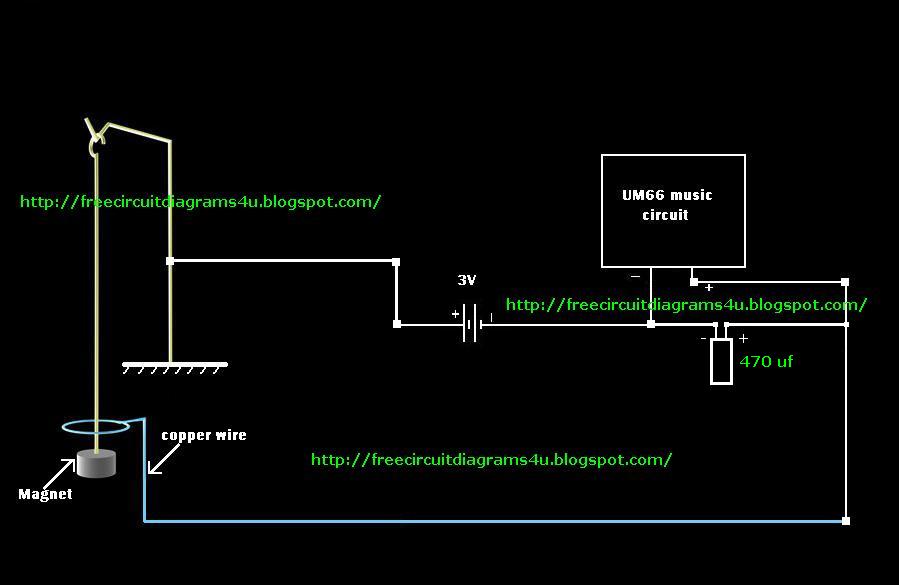
Advertising lights controller circuit diagram 555
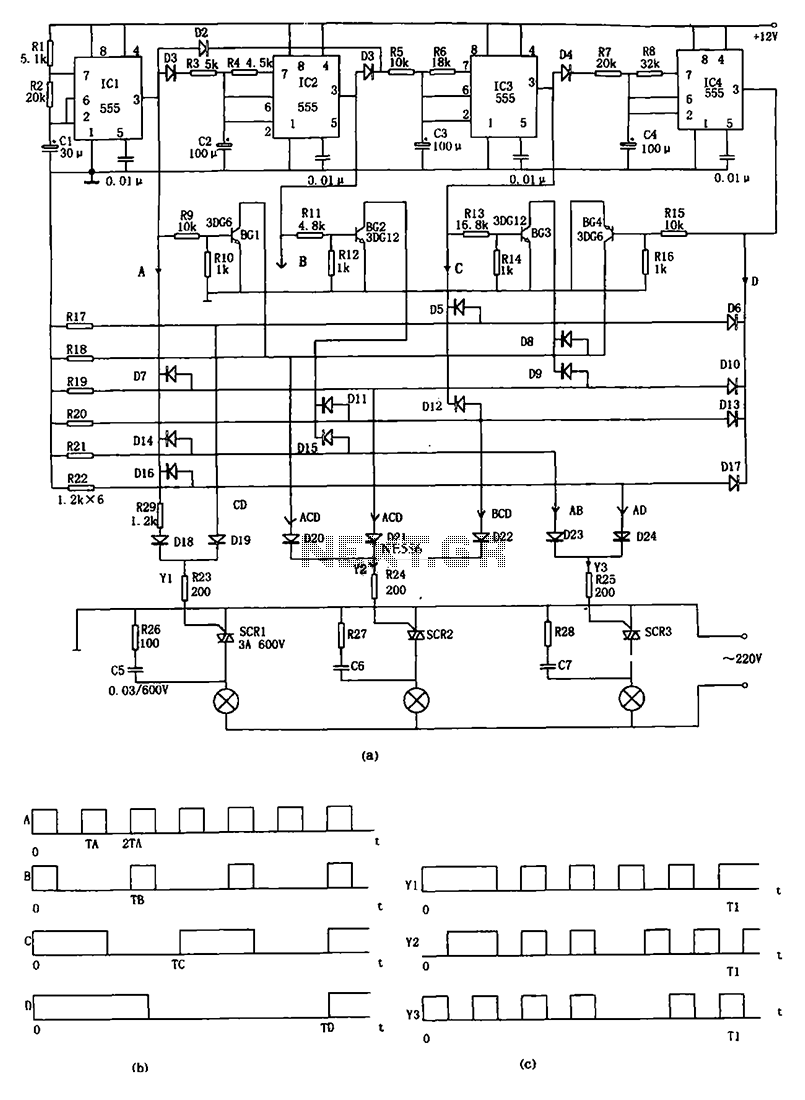
The decorative lamp control circuit is illustrated in the figure. The controller comprises a pulse generator, a frequency divider, a matrix circuit, and a thyristor control circuit. Components IC1, R1, R2, C1, and others form a multivibrator where the oscillation frequency is calculated as f = 1.44 / (R1 + 2R2 C1), resulting in a frequency of approximately 4Hz. IC2 and its associated components, including the trigger circuit R3, R4, and C2, provide a square wave output that is half the frequency of IC1, as depicted in the flip-flop circuit. IC3, along with components R5, R6, and C3, generates a square wave output that is one-third of the frequency of IC1. IC4, shown in the figure, along with flip-flop circuit components R7, R8, and C4, produces a square wave output that is one-sixth of the frequency of IC1. The matrix circuit combines four different waveforms (A, B, C, D) based on specific logic combinations to create three types of state changes. The corresponding logic circuit matrix is defined as: Y1 = A + CD, Y2 = ABC + ACD + BCD, and Y3 = AB + AD. The relationships between the waveforms Y1, Y2, and Y3 are illustrated in the figure. These three pulses trigger triacs SCR1, SCR2, and SCR3, allowing for the operation of three lights. The various combinations of these three lights produce multiple decorative patterns or graphic displays. By altering the logical combinations in the matrix, additional variations can be achieved. This controller manages three sets of lights, facilitating a range of combination variations suitable for decorative lighting applications.
The decorative lamp control circuit utilizes a sophisticated arrangement of components to achieve dynamic lighting effects. At the heart of the circuit is a multivibrator formed by IC1 and passive components R1, R2, and C1, which generates a fundamental oscillation frequency. The frequency is determined by the formula f = 1.44 / (R1 + 2R2 C1), allowing for precise control of the output frequency, which is approximately 4Hz. This frequency serves as the basis for subsequent signal processing.
The frequency divider is implemented using IC2, which, along with its trigger circuit consisting of R3, R4, and C2, effectively reduces the frequency of the output from IC1 by half. This division is crucial for creating the necessary timing intervals for the subsequent logic operations. Similarly, IC3 operates to produce a square wave output at one-third the frequency of IC1, enabling further modulation of the lighting patterns.
The matrix circuit is pivotal in determining the overall behavior of the lighting system. It takes four distinct waveforms (A, B, C, D) and combines them through specific logic operations to yield three output states (Y1, Y2, Y3). These outputs are defined by the logic equations: Y1 = A + CD, Y2 = ABC + ACD + BCD, and Y3 = AB + AD. This logic matrix allows for intricate control over the lighting patterns, facilitating a wide range of decorative effects.
The triacs SCR1, SCR2, and SCR3 are employed to control the power delivered to the lights. By triggering these triacs with the output pulses from the matrix circuit, the system can selectively activate different combinations of lights, resulting in various decorative displays. The ability to modify the logical combinations within the matrix circuit further enhances the versatility of the lighting patterns, making the circuit suitable for a variety of decorative applications.
Overall, this decorative lamp control circuit exemplifies a well-designed system that integrates timing, logic, and power control to create visually appealing lighting effects. The modular nature of the components allows for adaptability and customization, making it an ideal solution for decorative lighting needs. As shown in FIG ad decorative lamp control circuit. The controller consists of a pulse generator, a frequency divider, matrix circuit and thyristor control circuit.IC1 and R1, R2, C1 and other components multivibrator, the oscillation frequency of f 1.44/(R1 + 2R2 C1, corresponding to the icon parameter is about 4Hz.IC2 and trigger circuit R3, R4, C2 and other components to achieve a square wave output of IC1 divided by two, as shown in (b) of the flip-flop circuit b shown .IC3 and R5, R6, C3 and other components to achieve the third of a square wave a of IC1 output frequency, as shown in ( .IC4 C shown in b), and the flip-flop circuit R7, R8, C4 and other components to achieve square wave output from IC1 a six-division, as shown in (b) of the D Fig. The matrix circuit A, B, C, D four different waveforms according to a certain logic combination, to obtain a combination of three types of state changes, the corresponding logic circuit matrix is: Y1 A + CD, Y2 ABC + ACD + BCD, Y3 AB + AD, and the relationship between the waveform Y1, Y2, Y3 is as shown in (c) in Fig.
With Y1, Y2, Y3 three pulses to trigger triac SCR1, SCR2, SCR3, you can make three lights work. The three lights different combinations, you get many of the decorative pattern or graphic ad shape. If you change the logical combination of the matrix, but also get more variation.The controller can be realized on three sets of lights to control, thus achieving the status of three combinations of variations, which can be used for decorative lighting applications.
The decorative lamp control circuit utilizes a sophisticated arrangement of components to achieve dynamic lighting effects. At the heart of the circuit is a multivibrator formed by IC1 and passive components R1, R2, and C1, which generates a fundamental oscillation frequency. The frequency is determined by the formula f = 1.44 / (R1 + 2R2 C1), allowing for precise control of the output frequency, which is approximately 4Hz. This frequency serves as the basis for subsequent signal processing.
The frequency divider is implemented using IC2, which, along with its trigger circuit consisting of R3, R4, and C2, effectively reduces the frequency of the output from IC1 by half. This division is crucial for creating the necessary timing intervals for the subsequent logic operations. Similarly, IC3 operates to produce a square wave output at one-third the frequency of IC1, enabling further modulation of the lighting patterns.
The matrix circuit is pivotal in determining the overall behavior of the lighting system. It takes four distinct waveforms (A, B, C, D) and combines them through specific logic operations to yield three output states (Y1, Y2, Y3). These outputs are defined by the logic equations: Y1 = A + CD, Y2 = ABC + ACD + BCD, and Y3 = AB + AD. This logic matrix allows for intricate control over the lighting patterns, facilitating a wide range of decorative effects.
The triacs SCR1, SCR2, and SCR3 are employed to control the power delivered to the lights. By triggering these triacs with the output pulses from the matrix circuit, the system can selectively activate different combinations of lights, resulting in various decorative displays. The ability to modify the logical combinations within the matrix circuit further enhances the versatility of the lighting patterns, making the circuit suitable for a variety of decorative applications.
Overall, this decorative lamp control circuit exemplifies a well-designed system that integrates timing, logic, and power control to create visually appealing lighting effects. The modular nature of the components allows for adaptability and customization, making it an ideal solution for decorative lighting needs. As shown in FIG ad decorative lamp control circuit. The controller consists of a pulse generator, a frequency divider, matrix circuit and thyristor control circuit.IC1 and R1, R2, C1 and other components multivibrator, the oscillation frequency of f 1.44/(R1 + 2R2 C1, corresponding to the icon parameter is about 4Hz.IC2 and trigger circuit R3, R4, C2 and other components to achieve a square wave output of IC1 divided by two, as shown in (b) of the flip-flop circuit b shown .IC3 and R5, R6, C3 and other components to achieve the third of a square wave a of IC1 output frequency, as shown in ( .IC4 C shown in b), and the flip-flop circuit R7, R8, C4 and other components to achieve square wave output from IC1 a six-division, as shown in (b) of the D Fig. The matrix circuit A, B, C, D four different waveforms according to a certain logic combination, to obtain a combination of three types of state changes, the corresponding logic circuit matrix is: Y1 A + CD, Y2 ABC + ACD + BCD, Y3 AB + AD, and the relationship between the waveform Y1, Y2, Y3 is as shown in (c) in Fig.
With Y1, Y2, Y3 three pulses to trigger triac SCR1, SCR2, SCR3, you can make three lights work. The three lights different combinations, you get many of the decorative pattern or graphic ad shape. If you change the logical combination of the matrix, but also get more variation.The controller can be realized on three sets of lights to control, thus achieving the status of three combinations of variations, which can be used for decorative lighting applications.

